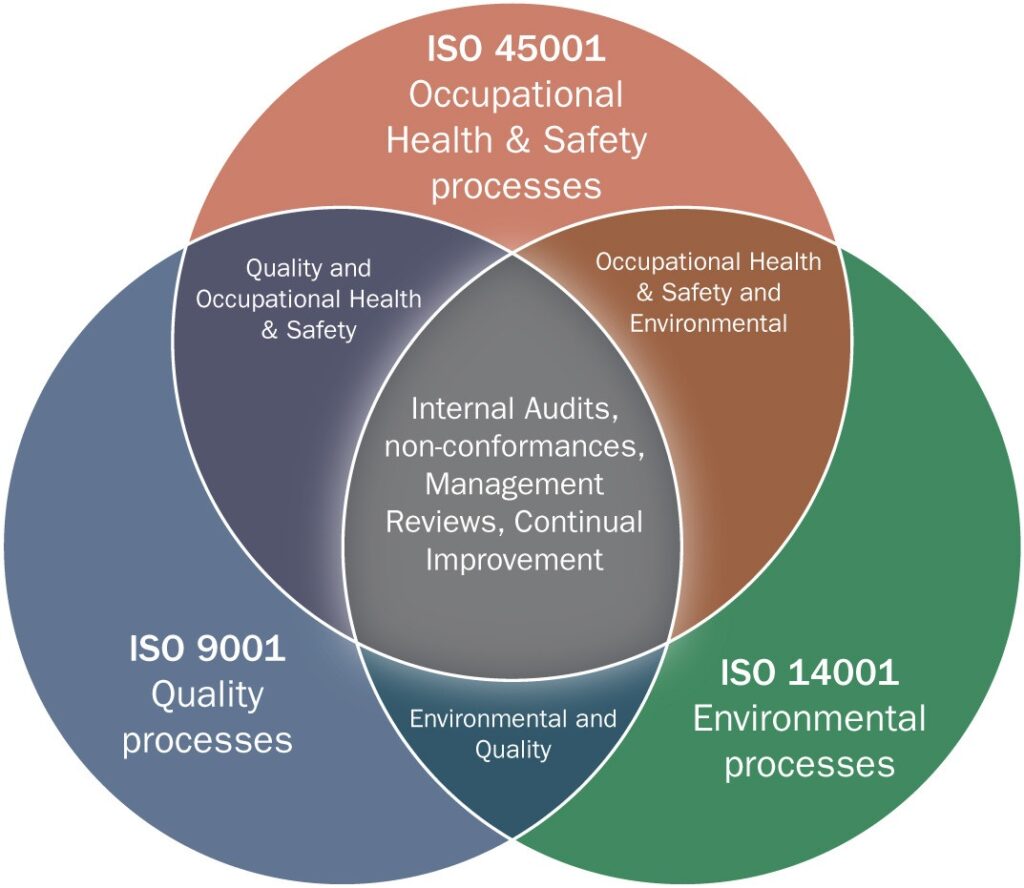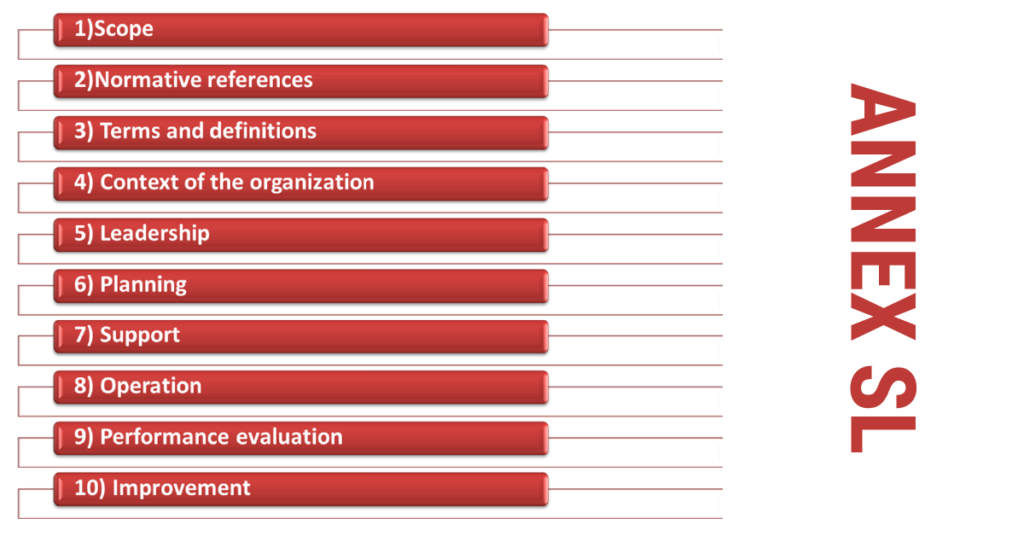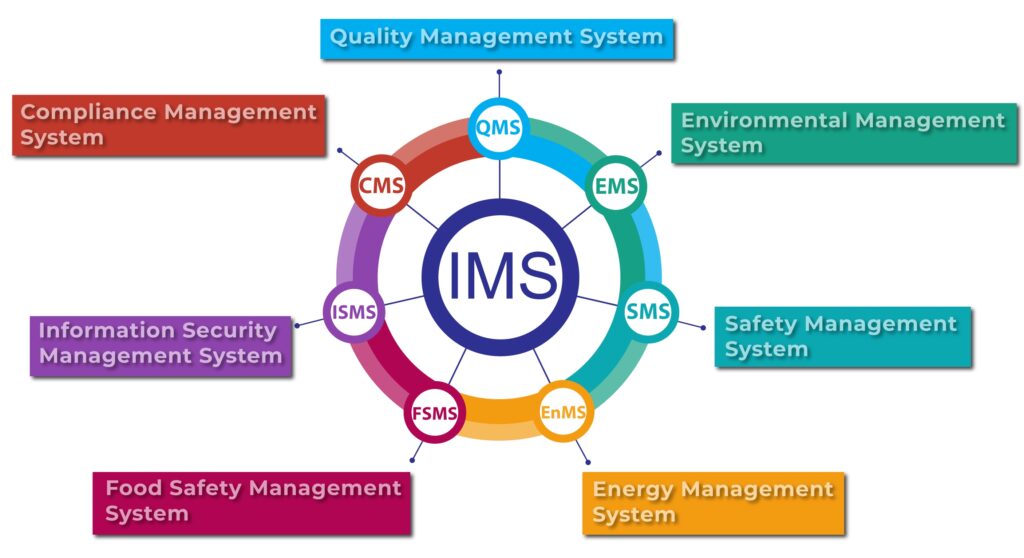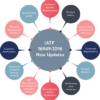INTEGRATED MANAGEMENT SYSTEMS
IMS is known as Integrate your management systems to reduce duplication and improve efficiency. If you are currently running separate management systems, get in touch to see how you could make potential savings.
In today’s competitive business environment, streamlining operations is essential to keeping overhead costs low. Key principles of lean management include eliminating redundancies and consolidating systems.
Implementing an integrated management system provides a framework for doing just this. When you integrate your management systems, you reduce duplication and improve efficiency.
Integrated management systems provide greater benefit than running separate management systems in parallel. If you are currently running separate management systems, get in touch to see how you could make potential savings.
What is Integrated Management Systems?
An integrated management system is a single system designed to manage multiple aspects of an organization’s operations in line with multiple standards, such as those for quality, environmental, and health and safety management.
Most businesses already have systems — either formal or informal — for dealing with these issues; however, what many managers don’t realize is the degree to which they are duplicating processes or creating unnecessary extra work for their staff.
Ultimately, safety, environmental management, and quality control have many common points, and all work towards the goal of making your organization more effective and efficient.
In practice, an integrated management system involves merging existing formal systems and implementing specific best practices organization-wide.

Benefits of Integration
In an integrated management system, the whole is greater than the sum of its parts. Successfully integrating your management systems can have a number of very tangible benefits for your organization, including:
- Avoiding duplication of effort
- Making more effective use of senior management time
- Using resources to implement and manage systems in a more efficient manner
- Achieving more cost efficient certification
- Reducing audit fatigue
Management Integration and Certification
Most businesses are aware of the value of certification under ISO 9001, ISO 14001, ISO 45001, and other management system standards. It’s important to remember that the purpose of ISO and other standards is to help you run a better organization.
If your management systems are causing your staff to duplicate work unnecessarily, they aren’t delivering the value they should be.
That’s where comes in. We can provide fully integrated audits of multiple management system standards, thereby giving you the reassurance that the integration of your system is effective and identifying any opportunities for further improving the integration, and therefore effectiveness, of your system.
Annex SL and Integration
Annex SL is the document that defines the high-level structure for all ISO management systems standards. Annex SL is designed to better facilitate the use of integrated management systems, providing organizations with the tools they need to streamline current protocol, encourage standardization and transform existing management systems into an integrated model.
The common structure has been introduced in the latest ISO 9001 and ISO 14001 standards, and will also be used in ISO 45001 (the replacement of OHSAS 18001).
This will make the standards more compatible and enable more effective integration. Aside from the other benefits of consolidation, adopting integrated management systems now will ease the transition into this model. For more information about the role,

Making IntegratedManagement System Standards More Compatible

The common structure has been introduced in the new ISO 9001, ISO 14001, and ISO 45001 (the replacement of OHSAS 18001). This will make the standards more compatible and enable more effective integration of management systems in three key areas: quality, environmental management, and occupational health and safety.
Here’s a brief overview of each of these universally adopted and implemented integrated management system standards:
- ISO 9001. Certification in the ISO 9001 integrated quality management system standard demonstrates that your organization is meeting stringent quality management system requirements in the following areas: facilities, people, training, services, and equipment. Attaining this certification is regarded as the first step in the implementation of a process of continuous improvement throughout your organization.
- ISO 14001. Attaining ISO 14001 certification is essential for any organization that intends to establish, implement, maintain and improve an efficient environmental management system. The extent to which ISO 14001 standards are applied is based on factors such as the organization’s specific environmental policies, the types of products and services it provides, and its location and operating conditions.
- ISO 45001. The new H&S standard ISO 45001 encompasses the extremely important area of occupational health and safety. This standard will provide a framework for reducing workplace risks, improving employee safety, and generally creating better working conditions for employees throughout the world.



